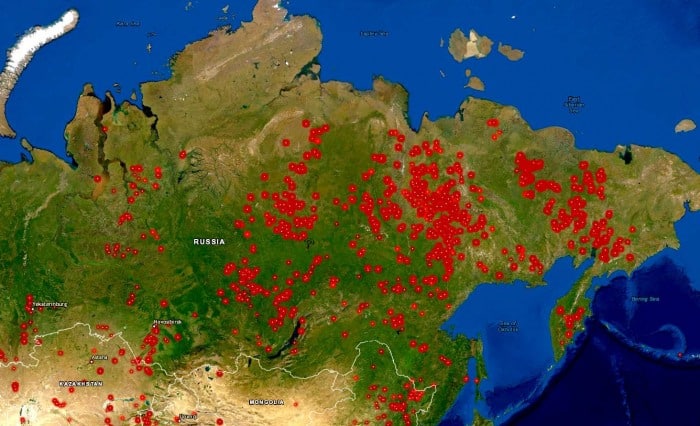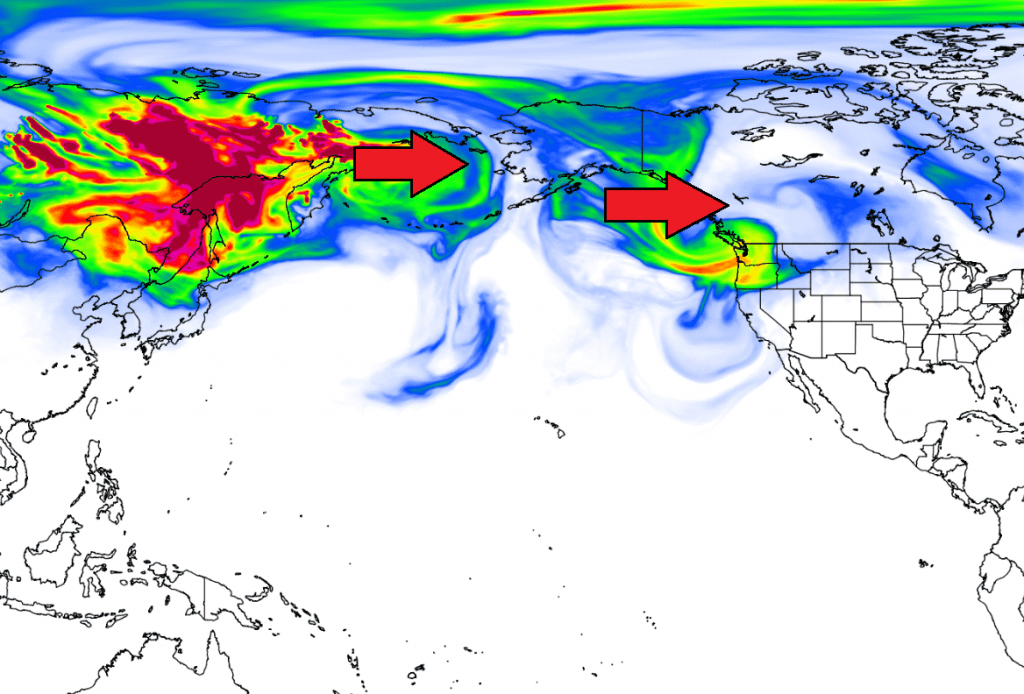The smoke from wildfires raging in Siberia have drifted into the Pacific Northwest this week, causing haze in the skies.
Upper level winds are picking up the smoke from the fires and pushing it 5,000 miles across the North Pacific and into cities along the U.S. West coast.

Last week, the East coast of the U.S. was engulfed by Saharan dust. And this week, cities along the Pacific Northwest get hazy skies from smoke from fires currently raging in Siberia. And that smoke will stay around for a few days.
“Our wind pattern remains the same, which means we’ll have those hazy sunsets over the next few nights,” Salesky said.
Here a map showing the current fires in Siberia:

Here a map by NASA showing the smoke and its 5,000 miles long travel towards the Pacific Northwest:

Not only has Siberia had to contend with smoke and fire, but hot weather, too. Temperatures hit 100 in the arctic town of Verkhoyansk two weeks ago and Siberia has been beyond unseasonably warm this year, which has concerned scientists.
The heatwave continues in Siberia. Verkhoyansk set new heat records on 7 consecutive days, from June 19th to June 25th inclusive. The 26th was a little cooler – a maximum of ‘only’ 31.4 C. But today 27th yet another date record has been set (33.6 eclipsing 33.0) @AssaadRazzouk pic.twitter.com/LAfgNujqmN
— Kilkenny Weather (@kilkennyweather) June 27, 2020
“The Arctic is figuratively and literally on fire – it’s warming much faster than we thought it would in response to rising levels of carbon dioxide and other greenhouse gases in the atmosphere, and this warming is leading to a rapid meltdown and increase in wildfires,” University of Michigan environmental school dean Jonathan Overpeck, a climate scientist, told The Associated Press in a recent email.
The Arctic on fire: Siberian wildfires expand dramatically, sending a smoke cloud towards Canada and the United States! The Siberia wildfires coverage and burning land areas are now extending across nearly 3 million acres (= 1.2 million hectares).https://t.co/e35bPunbw9
— severe-weather.EU (@severeweatherEU) July 1, 2020
Siberia experiences extreme temperatures throughout the year – from well below freezing to above 100 degrees Fahrenheit.
More strange weather phenomena on Strange Sounds and Steve Quayle. Now if you are looking for supplements to increase your healthy lifestyle and sexlife please visit Natural Health Source. [KATU]












